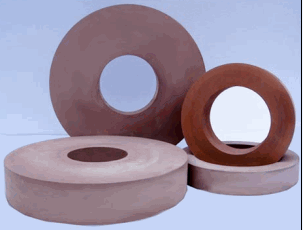
Today the content we will discuss is the latest dynamic in the grinding. We refers to abrasives grinding as tool grinding because the industry has been used to this term.
There are some difference between tool grinding and other grinding: it completely depends on manual grinding machine processing, so the operator's technical level will play a vital role. And the selection of grinding wheel granularity, the extent judgement of the grinding wheel dressing, manual control of the amount of feed and so on, all need tool grinding. It is generally divided into three categories: roughing, finishing and fettling.
A. Roughing: Usually choose 46# emery wheel, it needs to be cut down the ground to the required size of workpiece to achieve the required flatness and roughness.
B. Finishing: Usually use 100# and 120# emery wheel, in addition to the finishing grinding plane, sometimes grinding certain trough is needed, and also have higher requirements to keep the shape of grinding wheel.
C. Fettling: The 320# special grinding wheel needs to be repaired to the thin thickness, such as 0.02 mm, and then cut out of the trough to R0.03 mm of tank bottom diameter.
For roughing and finishing, grinding process has been basically standardized. However, there are still new materials that require different types of grinding wheel to do grinding effectively. Standard mould material is SKD11 and SKD61, for example, with the cost reduction requirements, domestic materials have gradually been used. The most commonly used is Cr12MoV and W6Mo5Cr4V2Al. When grinding the domestic material, you will find that the conventional grinding wheels will wear and tear. That is because the cutting performance and hardness of the materials have changed, which needs to adjust the types and hardness of the abrasive wheel in order to play a good grinding effect.

Because the tool grinding besides common 38A white fused alumina series, it still includes 32 a single-crystal fused alumina series and SG ceramic fused alumina series. According to different materials, we will choose different abrasive grinding wheel. All materials used with the same grinding wheel can not get good effect.
A. Dry grinding and Wet grinding
Generally speaking, the heat produced in the process of grinding will burn artifacts, so you need to use coolant to take away heat timely. This is the so-called wet grinding.
However, grinding tools is a very special application. Due to the shape of the part is more complex and the machining accuracy is higher, most of technologies depend on artificial setting, so there is no way to adopt the method of wet grinding. In theory, the hardness of steel is very high, and single-crystal corundum and SG grinding wheel is the best choice. But in the application of dry grinding, abrasives need have the very good self-sharpening to avoid excessive heat, and white fused alumina is the best choice. That is why the tool grinding has been setting the white fused alumina as standard abrasives for many years.
B. Slotting for fettling
To electronic mould slot processing, NORTON brand has launched the latest high performance special AA wheel, which has good stability and the stability of the grinding, and this kind of grinding can not only get a very fine trough, but also can work out the better right Angle at the bottom. The difficult point of his procedure is to fix to 0.2 mm thickness and then it may rupture because of the abnormal stress. This is mainly caused by uneven grinding wheel internal organization. NORTON AA grinding wheel, it is from this point to research and develop and has made very big breakthrough on manufacturing process. Therefore, now AA grinding wheels have overcome this weakness, and can dressing to 0.2 mm thickness steadily, and the fettling performance is satisfactory.
At the same time, it is recommended to use multipoint diamond pen when tinker, which can dressing from 6 mm to 0.5 mm thickness in 30 minutes, then switch to a single point diamond pen to 0.2 mm. The overall renovation time can be controlled within an hour and a half.
C. Grinding system
Grinding can be thought as a system engineering, and includes machine tool setting, the type of workpiece material, operating parameters and selection of grinding wheel in input aspects. Through the process of grinding, the output is the grinding effect (surface quality of workpiece, production efficiency and economic cost). Once the effect of grinding fails to achieve the ideal effect, it is a must to check from the four factors of the input, rather than just look at grinding wheel. Sometimes it is not because of the problem of grinding wheel, but the workpiece material has changed, or the swings in heat treatment causes the grinding problems. It often wastes a lot of time to check the problem just from the point of grinding wheel.
For grinding wheel, there is no such statement like the more expensive wheel the more useful, and the more cheap wheel the more bad. It should be the more suitable grinding wheel that will work greatly. What should you consider the suitable design, it must be designed according to the condition of machine tools and processed materials and totally match the model of the grinding wheel, which can cut freely and fulfill the requirements of surface quality.
Mould is the foundation process equipment of industrial production. In the electronic, automotive, electrical, electronics, instruments, household appliances and communication products, 60%-80% of accessories need to rely on moulding. The level of mold production is inseparable with the quality of abrasives products in the process of machining. Now mobile phones, computers and other electronic products are designed to be more compact and sophisticated, which plays a big role in the development of mould.